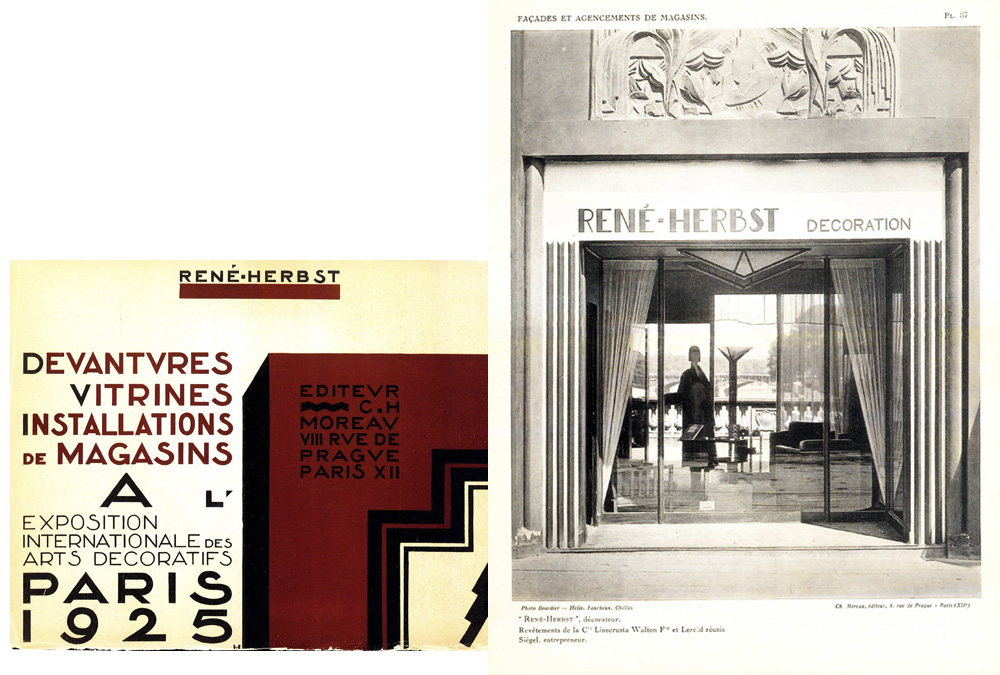On display in Cooper Hewitt’s The Jazz Age: American Style in the 1920s Jazz Age exhibition is the Design Library’s René Herbst’s Store windows, vitrines, shop installations for the l’Exposition Internationale des Arts Decoratifs, Paris, 1925.
This book was purchased and owned by furniture and industrial designer Gilbert Rohde (1894-1944) when he attended the Paris Exposition in 1925. Rohde was interested in the work of designers like René Herbst. It is the gift of George R. Kravis II to the Cooper Hewitt, Smithsonian Design Library.
The “Exposition Internationale des Arts Décoratifs et Industriels Modernes” established Paris as the city to sell the new design and aesthetic of Art Deco. Storefront architecture and displays both created and promoted this style as part of the city streetscape.
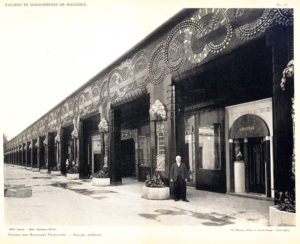
Galerie des Boutiques Françaises. Sauvage, architecte. Pl. 39
The Pont Alexander III Bridge, which connected the two parts of the Exposition, was turned into a modernist shopping mall by the architect Maurice Dufrêne. The Bridge and on the street of Galerie des Boutiques, exclusive shops promoted luxury goods with carefully staged and designed window displays. The banks of the Seine were lined with floating restaurants built for the Exposition, which became a popular attraction.
René Herbst, (1891-1982) author of this image collection, was an interior decorator and furniture designer, and had a shop himself, Établissements René Herbst. At the 1925 Exposition he created several shop windows on the “rue des boutiques” on the Pont Alexandre-III Bridge. The window displays and exterior facades of these shopping showcases utilized iconic Art Deco design elements. Large department stores such as Le Printemps, les Galeries Lafayette, and Au Bon Marché, seen in the images below and which are still in business today, all participated in this massive Art Deco merchandise promotion.
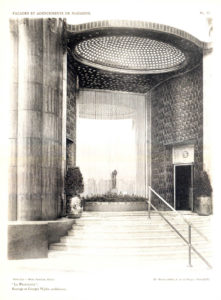
Le Printemps. Sauvage et Georges Wybo, architects Pl. 42.
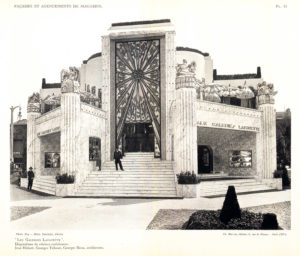
Les Galeries Lafayette, Exposition des vitrines exteriéures. Jean Hiriart, Georges Tribeau et Georges Beau, architects. Pl. 41.
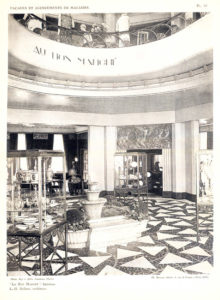
Le Bon Marché. Intérieur. L.-H. Boileau, architecte; Paul Follot, décorateur. Pl.40
The department stores had their own design and decorating consulting services that promoted the works of well known interior decorators, textile, wall covering, lighting and furniture, glass and ceramic designers. The “Studium-Louvre,” was a modern decorative art workshop in the department stores of the Louvre. The smaller boutiques and specialty shops sold specialty products such as furniture and other furnishings, textiles, clothing, fashion accessories, leather, jewelry and other decorative arts items.
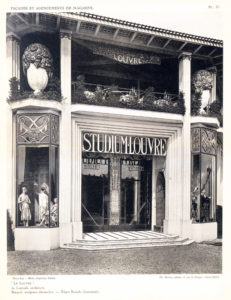
Le Studium au Louvre. A. Laprade, architecte; Binquet, sculpture decorative; Edgar Brandt, ferronerie (ironwork). Pl. 43
See this object in The Jazz Age: American Style in the 1920s, on view until August 20, 2017.
Elizabeth Broman is a Reference Librarian at the Cooper Hewitt, Smithsonian Design Library.
